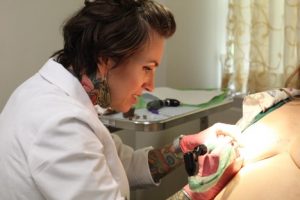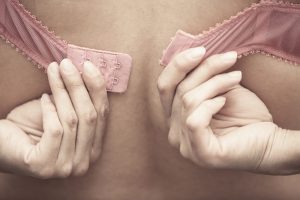According to the most recent statistics from American Cancer Society, 1 in 8 women will develop breast cancer during her lifetime. For many of these women, a mastectomy – which is the removal of most or all of the breast tissue – will be one of their primary, life-saving methods of treatment. A mastectomy, however, comes with various side effects, including loss of sensation to the breasts.
Tingling, numbness and loss of sensation to the breast area, and under the arm from the removal of lymph nodes, is one of the most unwanted side effects. This happens because the procedure severs nerves that provide sensation to the breasts, and the numbness often remains even after breast reconstruction is complete.
Regenerating Nerve Tissue
One Florida-based company dedicated to peripheral nerve repair is changing this life-altering outcome. AxoGen has taken steps to address this numbness, once thought to be a permanent side effect, with a new technology called ReSensation. They use allograft nerve tissue, or donated human peripheral nerve tissue, to regenerate feeling to the breasts.
The Way It Works
ReSensation sounds complex, but it isn’t. The breast surgeon takes donated nerve tissue and attaches it to a patient’s remaining nerve tissue in the affected area. Over time, that donated nerve becomes part of the patient’s body and helps to regenerate nerve-endings in that area.
“With this new surgical method, we are not only able to provide patients with a more natural-looking breast, but the possibility that the breast will feel more natural to them as well,” says James E. Craigie, M.D., with The Center for Natural Breast Reconstruction. “ReSensation is an exciting development in care that we hope will help bring our patients that much closer to feeling like themselves during and after treatment.”
Patients interested in ReSensation face few limitations, and the procedure is performed during breast reconstruction. Breast implants pose one limitation in that they are artificial and do not contain nerves, therefore this procedure does not pertain to patients undergoing breast reconstruction via implants. ReSensation is best used for patient’s who choose to reconstruct the breasts using their own tissue.
Once the ReSensation procedure and breast reconstruction is complete, patients can feel confident that they took all steps possible to hopefully restore their breast sensation and therefore achieve an even more natural result.
What Should You Do Next?
If you are a breast cancer or mastectomy patient, the next step should be to talk to your breast and plastic surgeon about reconstruction options. If you haven’t had a mastectomy yet, your breast surgeon can tell you what you should expect with surgery and recovery from the mastectomy. Your plastic surgeon can also determine if the ReSensation technology is right for you. Keep in mind that the answer is different for everyone. Your current medical conditions and breast cancer treatment plan help determine the final decision.
“We’re excited to offer this cutting-edge procedure to our patients and are committed to offering the women the best care possible,” continued Dr. Craigie. “It is our goal to make sure every patient understands her options for reconstruction and provide access to pioneering surgical treatments that could help improve her quality of life.”
Is ReSensation right for you? Visit NaturalBreastReconstruction.com to learn more, or call toll-free at (866) 374-2627.

 When a woman is diagnosed with breast cancer, she will be faced with many decisions including “Do I want breast reconstruction?” and if so, “What kind of reconstruction is best for me?” With numerous options available, it is important to evaluate each choice and decide which is best for each woman individually.
When a woman is diagnosed with breast cancer, she will be faced with many decisions including “Do I want breast reconstruction?” and if so, “What kind of reconstruction is best for me?” With numerous options available, it is important to evaluate each choice and decide which is best for each woman individually.
 3. The Best Tattoos are Done By a Tattoo Artist
3. The Best Tattoos are Done By a Tattoo Artist
 “Breast cancer” are two of the scariest words for women. Adding to the pain and fear, options for breast reconstruction after a full or partial mastectomy or lumpectomy are fraught with myths and misinformation.
“Breast cancer” are two of the scariest words for women. Adding to the pain and fear, options for breast reconstruction after a full or partial mastectomy or lumpectomy are fraught with myths and misinformation.  Posted Question:
Posted Question:
 For many women, a breast cancer diagnosis means a transformation, since both full and partial mastectomies are common as a way to rid the body of malignant tissues. These surgeries can leave a woman feeling uncertain or insecure about the changes.
For many women, a breast cancer diagnosis means a transformation, since both full and partial mastectomies are common as a way to rid the body of malignant tissues. These surgeries can leave a woman feeling uncertain or insecure about the changes.




